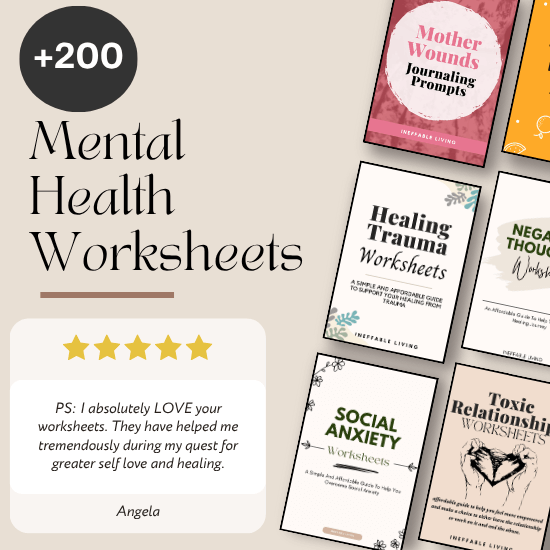Trauma lives in the body—not just in your memories or thoughts. You might feel calm intellectually, yet still jump at loud noises, struggle with connection, or feel chronically on edge or shut down. Polyvagal Theory helps explain why this happens and offers a roadmap to healing—one that starts with safety, not strategy.
Developed by Dr. Stephen Porges, Polyvagal Theory focuses on how your autonomic nervous system continuously scans for danger or safety—and responds in ways that shape your thoughts, emotions, and behaviors. Understanding this theory helps you work with your body, not against it, as you heal from trauma.
How Polyvagal Theory Can Help You Heal From Trauma
1. Trauma Traps You in Survival States
After trauma, your nervous system often stays stuck in one of three core states:
- Sympathetic (Fight or Flight): You feel anxious, panicked, hypervigilant, or angry.
- Dorsal Vagal (Freeze/Shutdown): You feel numb, hopeless, dissociated, or emotionally flat.
- Ventral Vagal (Safe & Social): You feel calm, grounded, connected, and capable.
Trauma tends to push your system out of ventral vagal and into survival states that helped you cope—but are now overactive.
Polyvagal Theory teaches: You’re not broken. Your body is protecting you in the only way it knows how.
Related: Best 8 Mindfulness Exercises For Adults That Will Help You Regulate Your Emotions
2. It Teaches You to Track and Name Your Nervous System States
The first step in healing is not fixing—but noticing.
Ask yourself throughout the day:
- Am I in fight, flight, freeze, or connected state?
- What does this feel like in my body? (tight chest, heavy limbs, blankness, fast breath?)
- What shifted me into this state?
Naming your state without judgment builds interoception—your ability to sense and understand your inner world. This helps you respond rather than react.
3. It Shifts the Goal from “Feeling Better” to “Feeling Safer”
Traditional trauma recovery focuses on talking through events or reframing thoughts. But Polyvagal-informed healing begins by helping your body feel safe again—because without that foundation, deeper healing is almost impossible.
The question becomes:
“How can I send my nervous system a cue of safety right now?”
This might include:
- Slow exhale breathing
- Gentle movement or rocking
- Listening to soothing music
- Touching your heart or holding a warm object
- Being with someone who feels calm and grounding
Safety is not just a feeling—it’s a physical state that can be re-learned.
Related: How To Feel Safe In Your Body?
4. It Helps You Understand Why You Can’t “Think Your Way Out” of Trauma
When your nervous system is in a survival state, your prefrontal cortex (responsible for logic, language, and planning) goes offline. That’s why you might blank out in therapy, freeze during arguments, or feel incapable of speaking your truth.
Polyvagal Theory offers compassion: You’re not being difficult—you’re being dysregulated.
Once you recognize this, you can shift from “Why can’t I get over it?” to “What does my body need to feel safer right now?”
5. It Builds the Concept of “Nervous System Flexibility”
Healing isn’t about staying calm all the time—it’s about building the capacity to move between states. This is called nervous system flexibility or resilience.
With practice, you’ll learn to:
- Notice when you’re slipping into survival mode
- Interrupt it with safety cues
- Return to calm connection more easily over time
It’s like building a muscle—the more you practice shifting states, the stronger your recovery becomes.
Related: Top 4 DBT Skills to Go from Crisis to Calm
6. It Helps You Reconnect with Others Through Co-Regulation
One of trauma’s cruelest effects is isolation. It makes connection feel dangerous or overwhelming. But Polyvagal Theory emphasizes co-regulation—healing in the presence of others—as a biological need.
Safe connection with a regulated person (even for a few moments) can begin to reshape your nervous system.
This includes:
- Eye contact with someone warm and steady
- Hearing a kind, calm voice
- Being physically close to someone emotionally safe
- Feeling seen, heard, or attuned to
These moments—however small—begin to rebuild trust in others and in your body.
7. It Supports Slow, Gentle, Body-Based Healing
Rather than forcing yourself to relive trauma or rush to breakthroughs, Polyvagal Theory teaches respect for your body’s pace.
Your system may not feel ready to “go deep” right away—and that’s okay. Regulation must come before processing.
Try body-based practices like:
- Stretching
- Walking in nature
- Tapping or havening techniques
- Rocking in a chair or swaying
- Somatic tracking with a therapist
- Vocal toning or humming to stimulate the vagus nerve
These practices help anchor you in the present moment—and slowly teach your system that it’s no longer in danger.
Related: Best 99 Coping Skills (+FREE Coping Worksheets)
10 Polyvagal Theory Healing Exercises
Each practice below is based on cues of safety that support vagus nerve activation and nervous system regulation.
1. Exhale-Extended Breathing
A longer exhale stimulates the vagus nerve and helps calm the fight-or-flight response.
How to do it:
Inhale slowly through your nose for 4 counts, then exhale gently through your mouth for 6 to 8 counts.
Repeat this for 2–5 minutes while sitting or lying down.
When to use it:
During anxiety, before sleep, or after conflict.
2. Vocal Toning (Humming or Chanting)
The vagus nerve runs through your vocal cords. Vibrations from humming or chanting activate it gently.
How to do it:
Close your mouth and hum softly, focusing on the vibration in your throat, chest, or face. You can also chant “OM” or any calming syllable for a few minutes.
When to use it:
To ground yourself in the morning or after emotional overwhelm.
3. Self-Soothing Touch
Touch provides signals of containment and safety, especially when you feel ungrounded or overwhelmed.
How to do it:
Place one hand on your chest and one on your belly. Breathe slowly and imagine warmth moving between your hands and your body.
You can also try crossing your arms and giving yourself a gentle hug.
When to use it:
When you feel disconnected, dissociated, or emotionally raw.
Related: 2-Minute Technique to Help You Manage Feelings Of Overwhelm
4. Orienting to Safety
This practice helps your brain realize that you’re not in immediate danger by visually scanning your environment.
How to do it:
Look around the room slowly. Let your eyes rest on objects, light sources, textures, or colors. Name 5–10 things you see and remind yourself, “I’m here. I’m safe now.”
When to use it:
After a flashback, panic attack, or when you feel spacey or out of your body.
5. Rocking or Rhythmic Movement
Gentle, repetitive movement helps regulate your nervous system and mimics early soothing experiences.
How to do it:
Sit on a chair or couch and slowly rock side to side. You can also sway while standing or gently bounce on your heels.
When to use it:
To reduce tension, regulate emotions, or calm pre-bedtime stress.
Related: Half-Smiling Technique to Reduce Emotional Distress
6. Safe Sound Listening
Certain tones—especially warm, low-pitched human voices and calming music—activate the ventral vagal system.
How to do it:
Listen to music with slow rhythms and emotionally warm tones. You can also play recordings of a comforting voice or nature sounds like ocean waves or birdsong.
When to use it:
During daily routines, like commuting, cooking, or before social situations.
7. Cold Water Splash or Towel
Brief cold exposure stimulates the vagus nerve and can interrupt spiraling or shutdown states.
How to do it:
Splash cold water on your face or place a cool, damp cloth on the back of your neck or chest for 30–60 seconds.
When to use it:
During dissociation, numbness, or emotional shut down.
Related: How To Release Emotions Trapped In Your Body?
8. 5-4-3-2-1 Grounding Technique
This sensory awareness tool brings you back into the present by engaging all five senses.
How to do it:
Name:
- 5 things you can see
- 4 things you can touch
- 3 things you can hear
- 2 things you can smell
- 1 thing you can taste or imagine tasting
When to use it:
During panic, when overwhelmed, or when disconnected from your body.
9. Co-Regulation With a Safe Person
Polyvagal Theory emphasizes that we regulate best in connection with others.
How to do it:
Sit or talk with someone who feels calm, warm, and steady. Make eye contact, match their breathing rhythm, or even sit in silence with shared presence.
When to use it:
After triggering events or during emotional difficulty.
10. Movement With Breath (Somatic Reset)
Combining intentional movement with breath helps move stuck energy and restore nervous system balance.
How to do it:
Try slow neck rolls, shoulder shrugs, or stretching while breathing deeply. Let your movements match your pace of breath and follow what feels natural.
When to use it:
To process emotional tension or start the day grounded and embodied.
Related: How to Use the SIFT Technique for Emotion Processing?

Conclusion
Trauma healing isn’t just emotional—it’s physiological. Polyvagal Theory helps you stop blaming yourself for how your body responds and start building a relationship with your nervous system based on compassion, awareness, and care.
You don’t have to force healing. You just need to create enough safety for your system to choose healing.
Each breath, each pause, each small act of regulation is a message to your body:
“It’s safe now. You can come home.”



